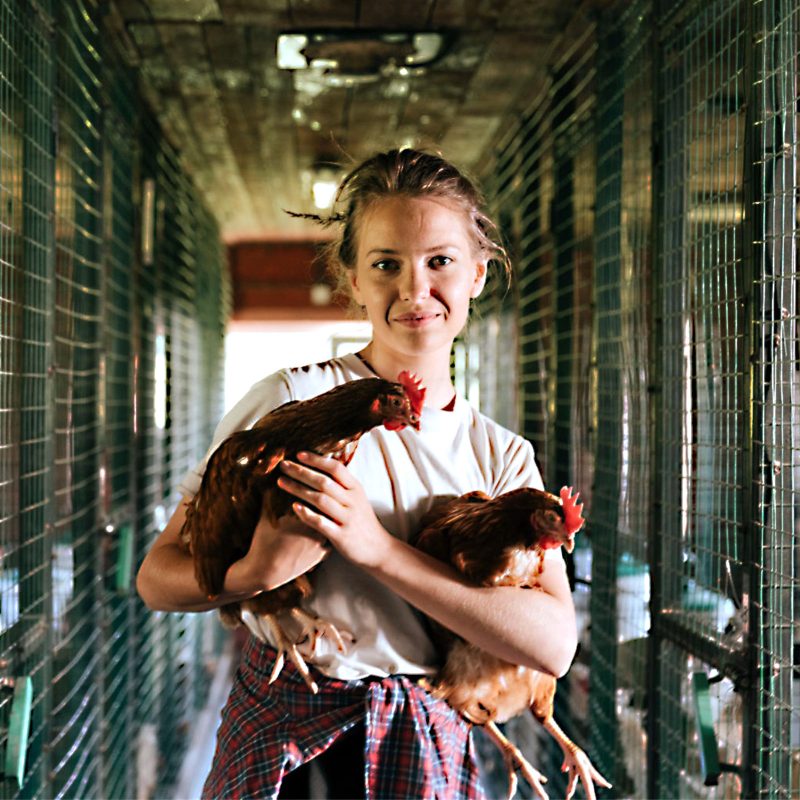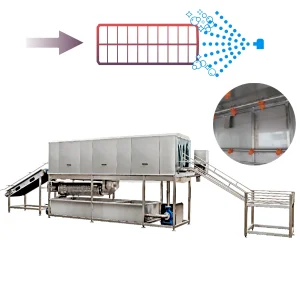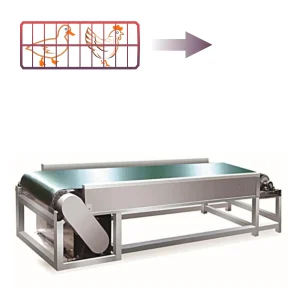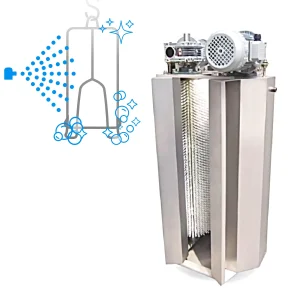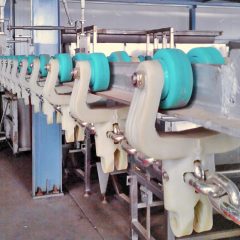1 GENERAL GUIDANCE
Whenever possible, poultry slaughterplants must record the number of birds that are dead on arrival and inform the farmer of this number.
Note: If birds are slaughtered using CAS/CAK systems it may not be possible to identify and record all dead on arrival birds.
Recommended: Poultry abattoirs should record and report to the farmer any incidence of:
- footpad dermatitis (pododermatitis)
- hock burn
- breast blisters
1.1 Handling of birds delivered in transport crates / other containers
Any container in which poultry are transported must be handled with care and not thrown, dropped or knocked over.
Any container in which poultry are transported must be unloaded horizontally and kept in an upright position.
Any container with a perforated or flexible base must be unloaded with particular care in order to avoid injury to the birds inside.
All transport containers must be examined on arrival at the slaughterhouse to identify any birds suffering from injury, heat or cold stress.
Any bird identified as suffering from injury, heat or cold stress must be slaughtered promptly and humanely.
Live birds must be unloaded from transport crates individually, and must not be tipped out of drawers or other transport containers.
2 UNLOADING AREAS
Transport containers must be unloaded from the transport vehicle as soon as possible. Live animals must not remain on transport vehicles longer than one hour after arriving at the slaughter facility.
If there is an unavoidable delay or breakdown that means transport containers must remain on the transport vehicle for longer than one hour, the plant must make sure that birds on the transport vehicle have shade, shelter, ventilation and water as appropriate.
Note: The best air flow and comfort for the birds may be maintained by keeping the transport vehicle moving.
Once transport containers are unloaded, if birds are not immediately slaughtered the containers must be held in an area where birds are protected from extremes of temperature, direct sunlight and adverse weather.
Recommended: The holding area should have reduced lighting.
Poultry must be monitored for heat and cold stress while being held in the holding area. If there is heat or cold stress, or injury, immediate action must be taken.
Note: Immediate action could include euthanisation of an individual injured bird, use of fans to reduce heat stress and/or the immediate slaughter of an affected group or crate of birds.
3 HANDLING OF LIVE BIRDS
Birds must be handled as little as possible up to the point of slaughter and unloaded from crates in a dimly lit room.
Recommended: Birds should be slaughtered as soon as possible after arrival at the slaughter facility (maximum within two hours of arrival at the slaughterhouse).
Best Mate recommends an automatic crate washing and return system to ensure hygiene, and reduce stress and wait times.
Unloading of crates must take place as close as possible to the cones or shackle line to minimise carrying distance. Smooth, silent crate conveyors can transport the birds calmly in their cages.
Inversion and suspension of birds must be minimised. No bird can be inverted or suspended in such a manner as to cause it avoidable pain or suffering. Live poultry must not be caught or carried by one leg.
Birds must not be inverted and placed in cones or on shackles unless the personnel and means to slaughter them are immediately available and operational. If birds are placed in cones these must be the correct size for the type of bird.
Our track systems can transport birds efficiently.
- Chickens and ducks must not be inverted for more than 60 seconds before being stunned or killed. Turkeys and geese must not be inverted for more than 120 seconds before being stunned or killed.
Abuse or maltreatment of birds is prohibited. The following actions are prohibited and are considered by
- No cutting, bleeding or dressing any sensible bird
- No beating, striking or throwing any live bird
- No other action that causes intentional harm to a live bird.
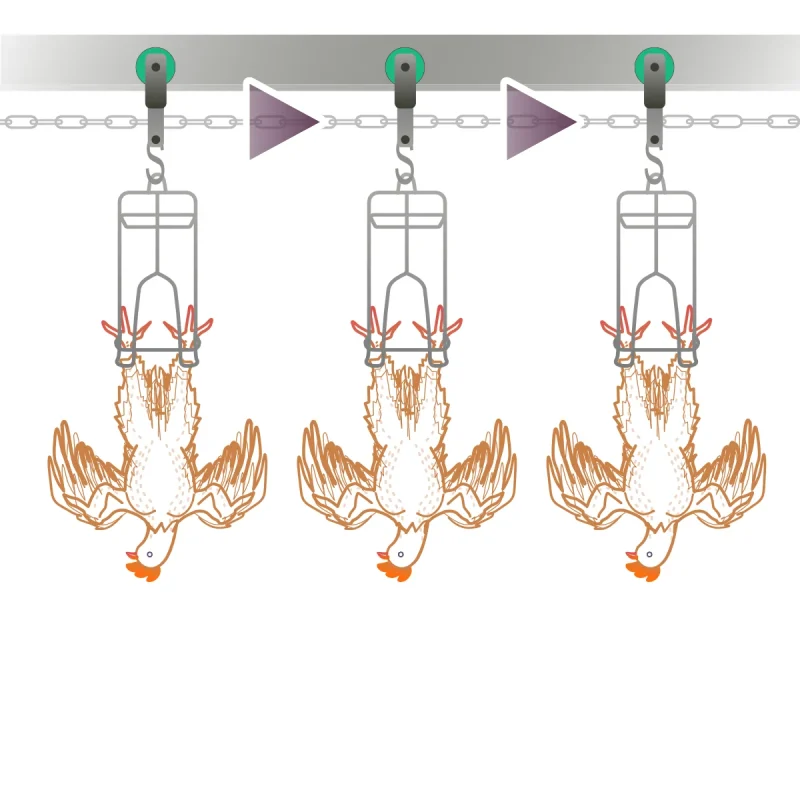
3.1 Shackles
Note: Shackles include static shackle hangers as well as automated shackle lines.
Recommended: Live birds should not be shackled.
If shackles are used they must be the correct size and width for the birds.
If shackles are used birds must be hung by both legs.
The shackle line must be designed and positioned in such a way that the bird suspended on it is clear of any obstruction – including when its wings are outstretched.
There must be no unevenness in the shackle line that causes the shackles to jolt. Best Mate equipment is designed for smooth operation. For example, we supply straight T-tracks and smooth-rolling trolley and chain sets.
The whole length of the shackle line must be immediately and easily accessible by any person so that a bird can receive individual attention as required.
From the point of shackling to the point of stunning there must be no noises that cause unnecessary disturbance to the bird. See our range of smooth silent bearings and sliders & rollers. Also see our slaughterhouse maintenance guide to reduce noise.
The speed at which the shackle line is operated must be such that any act or operation carried out on any bird suspended from it can be performed without undue haste and with proper regard for the welfare of the bird.
Where shackle lines are used the line speed must not exceed 35 birds per minute.
Shackles must be cleaned and maintained according to manufacturers’ specification.
Note: Rust on shackles may prevent effective electric stunning. See our range of stainless steel shackles and rust-free plastic shackles.
Recommended: The shackle line should follow as straight a line as possible.
Recommended: Breast comforters should be used when birds are shackled.
Also see Part 2 Stun & Slaughter Guidance…
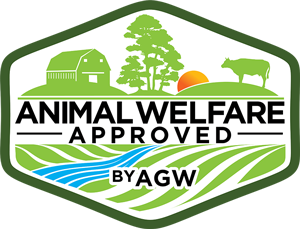
Animal Welfare Approved Certification by AGW
The programme and food label promote the well-being of animals and the sustainability of farms and abattoirs. Their label adds value to meat products for those people who are raising and handling animals by connecting conscientious consumers with farmers and meat processors using high-welfare practices.
Certified Animal Welfare Approved by AGW (AWA) has among the most rigorous standards for farm animal welfare currently in use in Africa, Europe and North America. Our standards are developed in collaboration with scientists, veterinarians, researchers and farmers across the globe to maximise practicable, high-welfare farm management.

